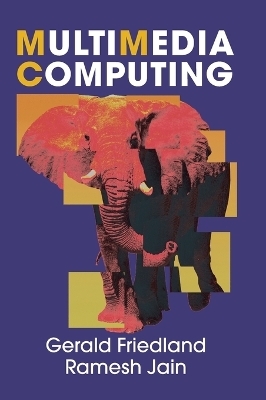
Multimedia Computing
Cambridge University Press (Verlag)
978-0-521-76451-3 (ISBN)
Humans are the best functioning example of multimedia communication and computing - that is, we understand information and experiences through the unified perspective offered by our five senses. This innovative textbook presents emerging techniques in multimedia computing from an experiential perspective in which each medium - audio, images, text, and so on - is a strong component of the complete, integrated exchange of information or experience. The authors' goal is to present current techniques in computing and communication that will lead to the development of a unified and holistic approach to computing using heterogeneous data sources. Gerald Friedland and Ramesh Jain introduce the fundamentals of multimedia computing, describing the properties of perceptually encoded information, presenting common algorithms and concepts for handling it, and outlining the typical requirements for emerging applications that use multifarious information sources. Designed for advanced undergraduate and beginning graduate courses, the book will also serve as an introduction for engineers and researchers interested in understanding the elements of multimedia and their role in building specific applications.
Gerald Friedland is the Director of Audio and Multimedia Research at the International Computer Science Institute, a private lab affiliated with the University of California, Berkeley, where he is currently leading a group of multimedia researchers. Ramesh Jain is a Donald Bren Professor in Information and Computer Sciences at the University of California, Irvine, where he is doing research in EventWeb and Experiential Computing for developing and building social life networks.
1. Introduction; 2. Multimedia: a definition; 3. Elements of multimedia computing; 4. Introduction to sensors; 5. Sound; 6. Light; 7. Multimedia documents; 8. Multimodal integration and synchronization; 9. Multimedia systems; 10. The human factor; 11. Fundamentals of compression; 12. Lossy compression; 13. Advanced perceptual compression; 14. Speech compression; 15. Multimedia information retrieval; 16. Signal processing primer; 17. Multimedia content analysis; 18. Content analysis systems; 19. Content and context; 20. Future topics.
| Erscheint lt. Verlag | 28.7.2014 |
|---|---|
| Zusatzinfo | Worked examples or Exercises; 3 Tables, unspecified; 9 Plates, color; 29 Halftones, unspecified; 82 Line drawings, unspecified |
| Verlagsort | Cambridge |
| Sprache | englisch |
| Maße | 182 x 261 mm |
| Gewicht | 920 g |
| Themenwelt | Informatik ► Grafik / Design ► Digitale Bildverarbeitung |
| Mathematik / Informatik ► Informatik ► Theorie / Studium | |
| ISBN-10 | 0-521-76451-3 / 0521764513 |
| ISBN-13 | 978-0-521-76451-3 / 9780521764513 |
| Zustand | Neuware |
| Haben Sie eine Frage zum Produkt? |
aus dem Bereich


